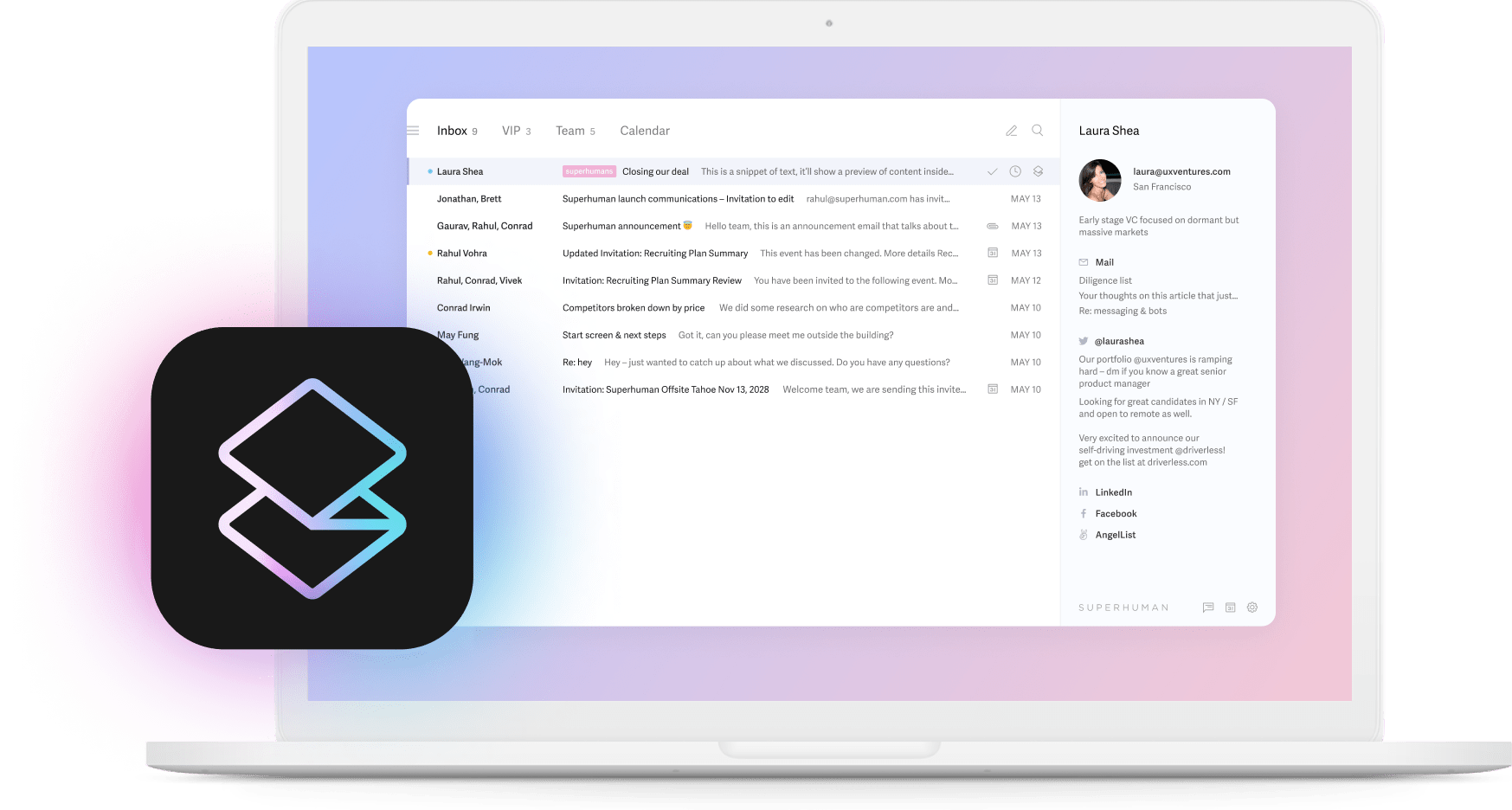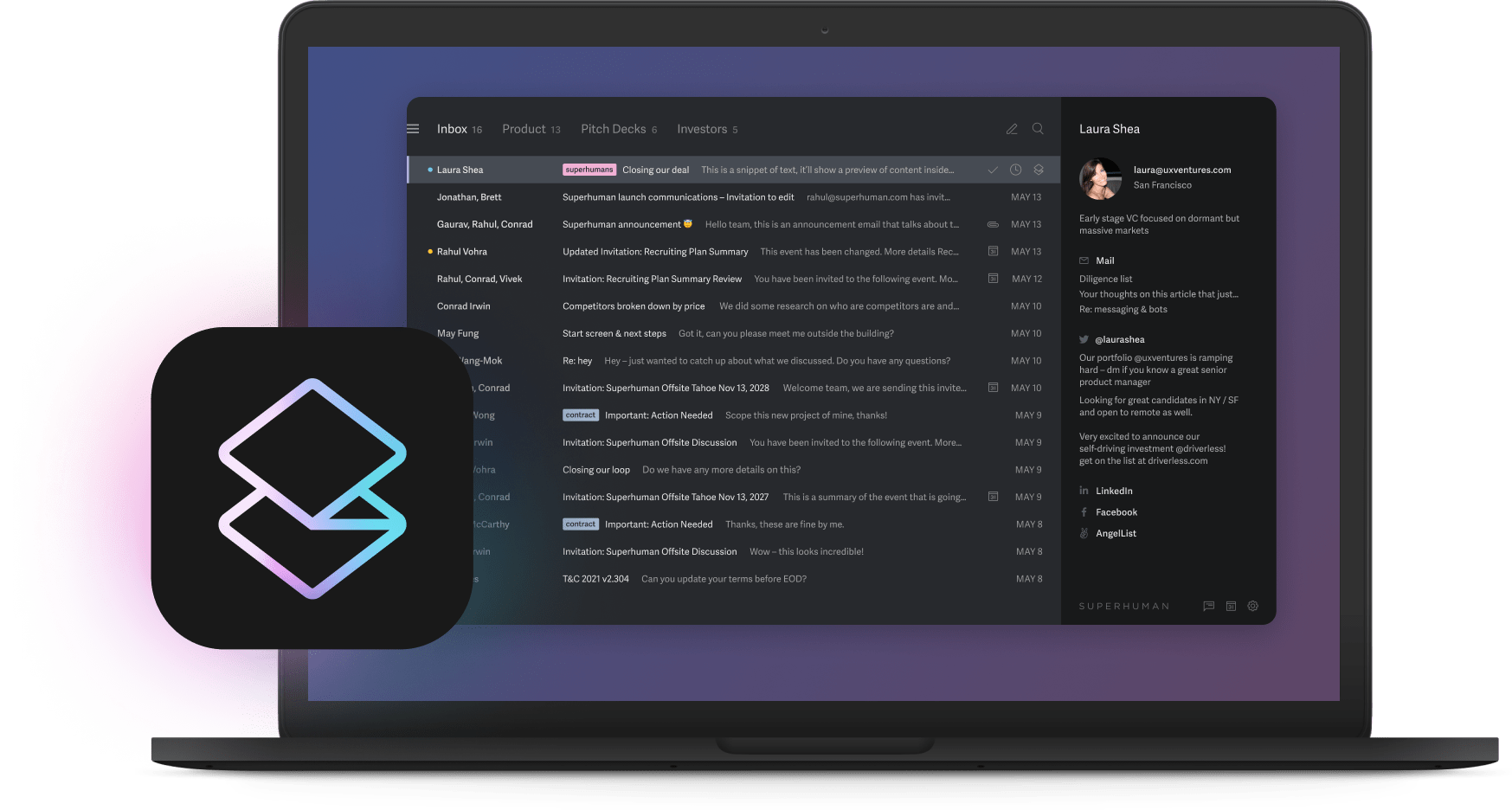
You're stuck switching between your laptop, phone, and tablet but your inbox looks different on each device. A client email opens on your phone but disappears when you check your laptop. Sound familiar? That's the desktop email problem that web email clients solved.
Web-based email changed everything. Your inbox lives in the cloud, syncs instantly across every device, and requires zero setup. Just open a browser, sign in, and you're in. No installers, no configuration files, no wondering if your settings will transfer.
This guide explains how web email clients work, what makes them different from desktop apps, and which platforms deliver the best experience for professionals who handle high-volume email.
What is a web-based email client?
A web-based email client runs entirely in your browser. Open Chrome, Safari, Edge, or Firefox, sign in, and your complete inbox appears instantly. You send, receive, search, and organize email without downloading any software.
Popular examples include Gmail, Outlook.com, Yahoo Mail, Fastmail, and Superhuman Mail. These platforms store your messages in the cloud, which means your data stays synced across every device you use: laptop, phone, tablet, or borrowed computer.
How web email clients differ from desktop apps
Desktop clients like Apple Mail, Thunderbird, and traditional Outlook install locally on your device. They download messages to your hard drive and require manual configuration for each account. Web clients live in the cloud and sync automatically.
Web clients win on accessibility and maintenance. Desktop apps excel at offline access and local data storage. Most professionals choose instant access and automatic syncing over occasional offline needs.
Why web email clients replaced desktop apps
Web clients solve the three biggest problems with desktop software: setup friction, update lag, and device lock-in.
- Instant access from anywhere: Log in from any browser and your complete inbox appears. Lose your phone? Your email is still there. Switch laptops? Nothing to reinstall.
- Zero setup or maintenance: No installers, no corrupted profiles, no manual patches. You skip the IT department entirely.
- Better security by default: Browsers sandbox web apps, isolating suspicious files from your operating system. This reduces malware risk compared to desktop clients that open files directly.
- Faster feature updates: Web clients update continuously. Desktop apps can take years to roll out new capabilities.
- Deep cloud integrations: Web email connects directly to your CRM, project management platform, AI tools, and collaboration suite. Desktop clients struggle to match this.
These advantages explain why most professionals now default to web-based email.
Web email limitations worth knowing
Web clients aren't perfect. Offline access works but remains limited compared to desktop apps. If you frequently work on planes or in areas with unreliable internet, check your client's offline capabilities before committing.
Heavy browser users may feel overwhelmed managing multiple tabs. Performance can drop on outdated browsers, though modern systems handle this well.
Desktop clients still offer superior offline support and local data archives. But they require setup on every device, manual updates, and slower feature adoption.
Understanding how email protocols work
Behind every email client are protocols that determine how your messages sync and store. Two technologies power email: IMAP and POP. Understanding the difference helps you avoid lost emails and migration headaches.
- IMAP (Internet Message Access Protocol) is the modern standard. It keeps your email on the server and syncs updates across all devices. Check email on your laptop, and it updates on your phone instantly. Delete a message on your tablet, and it disappears everywhere. IMAP supports labels, folders, search, and cloud backup. It's designed for multi-device workflows.
- POP (Post Office Protocol) was designed before cloud storage existed. It downloads mail to one device and often deletes server copies. Messages don't sync across devices, causing conflicts and duplicates. POP occasionally appears in older corporate setups, but it's no longer recommended.
Web email clients are built entirely around IMAP syncing. When people migrate from older POP-based setups, they often lose email or find messages scattered across devices. If you're switching email providers, confirm your old system uses IMAP before starting the transfer.
Choosing the right web email client: key questions
Before comparing specific platforms, ask yourself these questions. Your answers reveal which client fits your workflow.
- How important is speed? Your email client should load instantly and stay responsive with large inboxes. Slow load times directly impact productivity.
- Do you need offline access? If you travel frequently or work in areas with unreliable internet, offline capabilities matter. Some web clients offer limited offline modes; desktop clients provide full offline access.
- Will it integrate with your existing tools? Look for connections to your CRM, project management system, calendar, and communication apps. Integration saves time and avoids constant context switching.
- Is it built for high-volume email? Heavy emailers need triage tools, powerful search, organizational features like Split Inbox, reminders, and keyboard shortcuts.
- What's the ROI on premium features? Executives and team leaders processing hundreds of emails daily often find that premium clients pay for themselves through productivity gains. The right tool can save 4 hours per person every week.
Comparing top web email clients
Not all email clients are created equal. Here's how the top webmail options stack up for professionals who rely on email to get work done.
Superhuman Mail: The best web email client
Superhuman Mail is designed for speed, focus, and productivity. It's a hybrid web client optimized for power users who process high volumes of email and need every interaction to happen fast.
What makes it different: Superhuman Mail loads instantly even with massive inboxes. The keyboard-first interface lets you process email 2-3× faster than traditional clients. AI tools handle triage, writing, summaries, and insights. You get a unified inbox for multiple accounts, follow-up reminders, Split Inbox for automatic organization, snippets for quick replies, and email scheduling.
The design is clean, minimal, and distraction-free. No ads, no clutter, no features you'll never use, just the tools that make you faster.
The trade-off: Superhuman Mail is a premium investment at $30/month. But for executives, founders, and team leaders who process hundreds of emails daily, the math is straightforward. If you value your time at even $50/hour, saving 4 hours weekly means Superhuman Mail pays for itself many times over. The productivity gains compound across entire teams.
Best for: C-suite executives, founders, VPs, and team leaders handling high-volume email workflows who need to reclaim hours every week for strategic work.
Gmail
Gmail remains the most widely used email platform globally. It's free, reliable, and deeply integrated with Google Workspace tools like Drive, Docs, Sheets, and Calendar.
What makes it different: World-class search capabilities. Industry-leading spam filtering. Labels and categories for organization. If you live in Google tools, Gmail connects seamlessly to your workflow.
The trade-off: The interface can feel crowded and distracting. Heavy inboxes sometimes feel sluggish. Gmail encourages reactive workflows since new email always appears front and center. Power users often feel limited by the lack of advanced triage and automation features.
Best for: Anyone fully committed to Google Workspace who prioritizes search and spam filtering over speed and advanced productivity tools.
Fastmail
Fastmail is a premium alternative focused on privacy and simplicity. It's faster than Gmail or Outlook in most cases, offers no ads or tracking, and provides robust spam filtering without scanning your email content.
What makes it different: Excellent custom domain support. Clean, distraction-free interface. Strong privacy protections. Fastmail doesn't monetize your data.
The trade-off: Fewer integrations than Google or Microsoft ecosystems. Some features feel basic compared to enterprise solutions. You pay for the service ($5-9/month).
Best for: Privacy-conscious professionals who want a fast, ad-free experience and don't need deep integration with productivity suites.
Yahoo Mail
Yahoo Mail is still popular among casual users. It offers generous storage and a friendly interface that works well for personal email.
What makes it different: Massive free storage. Simple setup. Familiar interface.
The trade-off: The interface feels dated. Ads are intrusive. Yahoo Mail lacks modern productivity features like advanced triage or AI-native automation.
Best for: Casual, low-volume email users who need a large free inbox and don't require advanced features.
Outlook.com (Microsoft 365 webmail)
Outlook.com is the corporate standard for millions of organizations. It integrates tightly with Microsoft Teams, OneDrive, and the broader Microsoft 365 ecosystem.
What makes it different: Deep integration with the Microsoft ecosystem. Built-in calendar and task features. Works with Teams, OneDrive, and Office apps out of the box.
The trade-off: The interface feels bloated and slow. Large inboxes drag. Navigation is confusing, and basic tasks take more clicks than they should. Many knowledge workers tolerate Outlook because IT mandates it, not because they chose it. The mobile app frustrates more than it helps.
Best for: Organizations that require Microsoft 365 compliance or already have enterprise licensing in place.
Migrating between email clients smoothly
Switching email providers used to feel overwhelming. Modern tools make it straightforward if you follow the right sequence.
Start by exporting your mailbox using formats like MBOX, PST, or EML. These preserve your message content, attachments, and folder structures. Most modern email services include built-in IMAP migration assistants that automate the transfer.
If you use a custom domain, update your MX records to point to your new provider. DNS changes take 24-48 hours to propagate. Enable automatic forwarding from your old inbox to your new one during the transition. This catches any messages that arrive before DNS fully updates.
Here's what won't transfer automatically: filters, labels, and organization settings. You'll need to recreate these in your new client. Test everything before you commit. Send and receive messages from multiple devices to confirm signatures, forwarding, and folder syncing work properly.
Back up everything first, expect long sync times if you have thousands of messages, and clean up duplicate folders. If you're migrating to Superhuman Mail, the onboarding team walks you through the process with a personalized 1:1 call.
When your inbox connects to everything else
Here's what separates modern email from the old way: your inbox doesn't exist in isolation anymore. It connects to your CRM, talks to your project management tools, feeds into your communication platforms, and syncs with your calendar. Web email clients excel at these connections because they live in the cloud alongside all your other apps.
Think about a typical sales workflow. A lead emails you. That message should automatically flow into HubSpot or Salesforce. AI tags it with intent and assigns it to the right rep. A follow-up task gets created in Asana. The account timeline updates automatically. No one touches it.
This level of automation is hard to achieve with desktop clients but straightforward in cloud-first environments.
The best web email clients let you build these workflows without custom code or IT involvement. Your email connects to Slack so team notifications happen automatically. It talks to Zoom so meeting links appear with one click. It integrates with Google Calendar or Outlook Calendar so scheduling doesn't require back-and-forth. AI assistants handle triage and drafting, learning from your writing style over time.
When your team uses Superhuman Mail alongside tools like Grammarly for polished writing and Coda for collaborative documentation, your entire workflow becomes more efficient. Grammarly ensures every message you send is clear and professional. Coda lets teams turn email discussions into living documents that drive decisions. Together with Superhuman Mail's Shared Conversations feature, these tools create an environment where communication, collaboration, and execution happen without friction.
The goal is to make the tools you already use work together seamlessly, with email as the hub.
Keeping your web email fast
Even the best web email can slow down over time. Your browser accumulates cached data, extensions add overhead, and too many open tabs fragment both performance and attention.
Start with the basics: clear your browser cache regularly. Most browsers let you do this without logging out of your accounts. If your email client feels sluggish, try disabling browser extensions one by one to identify the culprit. Heavy or outdated extensions are common performance drains.
Keep your browser updated. Updates include performance improvements and security patches. Enable automatic updates if your browser supports them. Most web clients also offer some offline functionality. Turn it on if you work in environments with unreliable internet.
The fastest way to process email? Learn keyboard shortcuts. This isn't about memorization for its own sake. Shortcuts genuinely make you 2-3× faster.
Superhuman Mail's keyboard-first design is built entirely around this principle. Every action happens in under 100 milliseconds. Your inbox responds as fast as you can think.
If you're drowning in browser tabs, consider a browser built for focus like Arc or Brave. Tab overload slows your browser and fragments your attention. Fewer tabs mean better performance and clearer thinking.
Your inbox should accelerate your work
Web email clients have become the standard for modern communication. They deliver security, speed, cloud-powered integrations, and consistent performance across devices. Whether you're choosing your first email client or upgrading an outdated setup, understanding how web email works gives you the clarity to choose the right tool for your needs.
Pick the client that aligns with your workflow, security expectations, and the volume of email you handle. Free options like Gmail work for many people. Privacy-focused alternatives like Fastmail appeal to professionals who value data protection.
For executives, founders, and team leaders who process high volumes of email, Superhuman Mail delivers measurable productivity gains. Teams save 4 hours per person every week. They respond 12 hours faster and handle twice as many emails in the same time.
With the right setup, your inbox becomes not just a tool but a competitive advantage. You reclaim hours every week for strategic work that actually moves your business forward.





